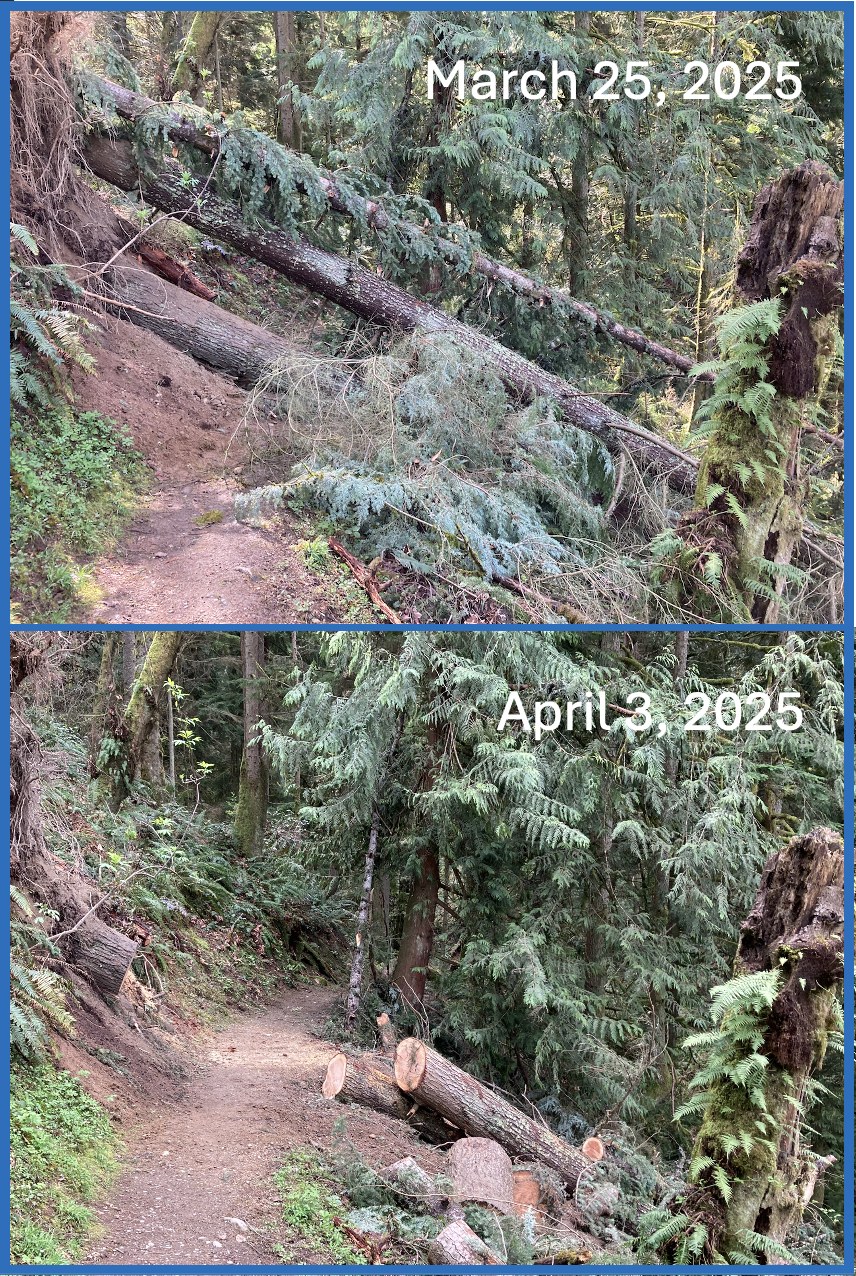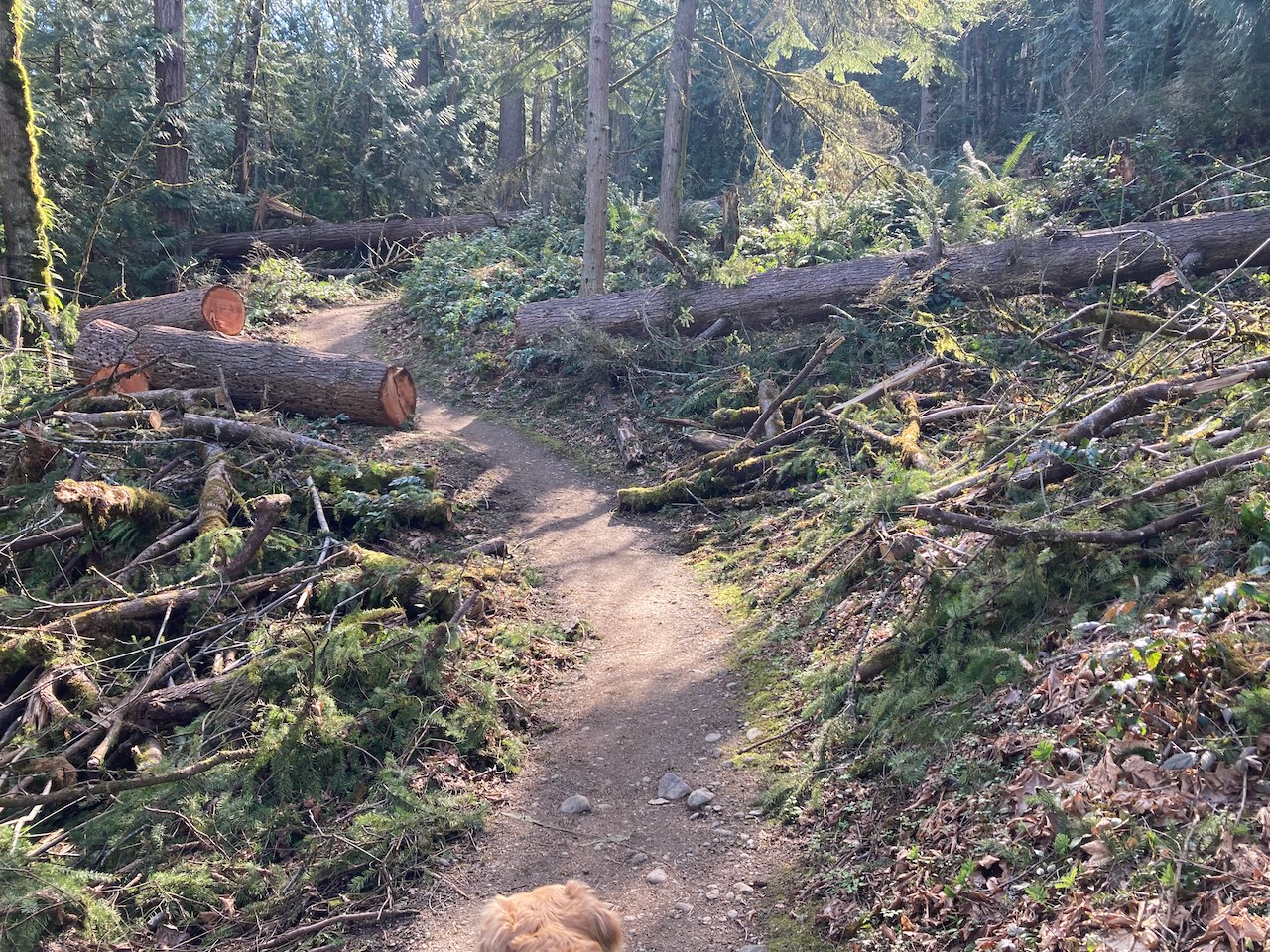April 3, 2025: Update: All down logs/trees have been dealt with. Other than some mud, the trails are in excellent condition. Flowers of colt's foot are in their prime as are yellow violets; June plum, miner's lettuce, and salmon berry are beginning to flower.The replanting has begun near the trailhead.
March 25: I have enjoyed this trail complex three times this late winter/early spring (March 7, 14, and 25). Between March 14 and 25, I was surprised to find three very large trees down and across the trail at about 0.85 miles in the Big Tree Ridge trail (last switchback before the flat section before the junction with the Precipice trail) (see Figure 1). It was not until I got above this obstacle that I was able to unravel how it happened and why there was such a complex of stems and branches at the point in the switchback where I first encountered this new and recent tree fall. A very large Douglas-fir on the east side of the trail along the relatively flat ridge top had gone over and taken two large western hemlock trees, situated on the west side and down slope, including their root wads over so that three robust sections of each tree's crown was now embracing this section of the trail. As I had a large dog on a leash, I opted to bushwack up the steep hillside rather than have dog, leash, and me fighting the stems and branches. Raised the old heart rate! I had assumed that all the big tree damage, done during the bomb cyclone, was in the past (see Figure 2). It wasn't.
In spite of these obstacles (nothing kills a walking rhythm liked down trees or high water flows in streams), it was a great hike on a very warm spring day with lots of flowers emerging (especially Colt's Foot and June Plum).
The other interesting change that has occurred and that I first witnessed on my March 7 hike (previous last hike had been on November 15, 2024) is all the deciduous tree thinning that has occurred in the bottom 0.3 miles of the trail. The obvious reason is the endeavor to add species and structural diversity to this relatively young, dense red alder -- bigleaf maple forest (with some black cottonwood and bitter cherry). I wish that they had not cut down the robust bitter cherry tree (these are becoming scarcer without fire or clearcuts) and I think they are going to find that when the remaining hardwoods leaf out that there is more shade that they had hoped for (see Figure 3). Some suggestions to deal with the shade, plant western hemlock, grand fir, and in the most humid places, but not in constant water, Sitka spruce or if you going to stay with just Douglas-fir (big mistake if you are seeking species diversity), cut more hardwoods down. You could also girdle trees that would prevent leaf retention and result in wood that came down at a later time (3 to 10 years). However, there is a surprising amount of carbon on the forest floor now -- as it decomposes, the decomposers will be very strong competitors with the newly planted trees for nitrogen.






Comments